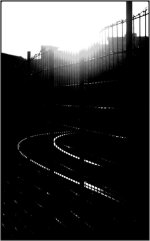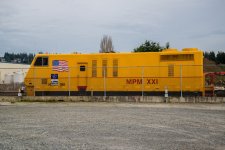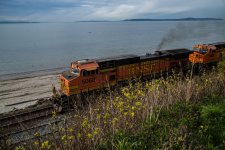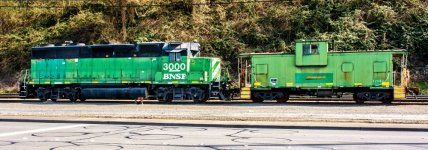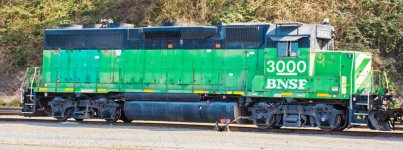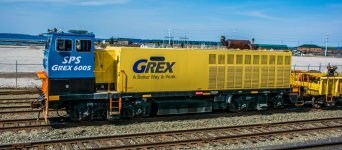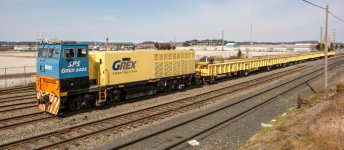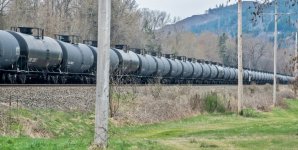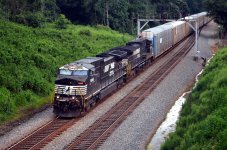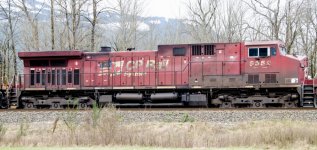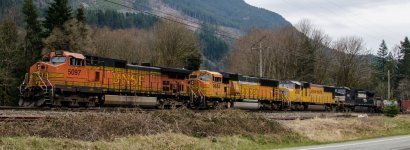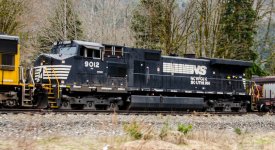You are using an out of date browser. It may not display this or other websites correctly.
You should upgrade or use an alternative browser.
You should upgrade or use an alternative browser.
Post your Train shots!
- Thread starter Rick M
- Start date
i do not know function - part of track repair?
I am stumped! Never seen anything like that before. I suspect that you're right and that it's custom made/cobbled together low HP locomotive for moving work trains around. Kinda looks like a railroad Winnebago.
AxeMan - Rick S.
Senior Member
I am stumped! Never seen anything like that before. I suspect that you're right and that it's custom made/cobbled together low HP locomotive for moving work trains around. Kinda looks like a railroad Winnebago.
I’m stumped too. It’s in UP color/ paint scheme but can’t find anything on the web about it. Doesn’t help the sign on the fence is blocking the road numbers. Go back and get the numbers on it lol I’m sure we can find out about it.
i do not know function - part of track repair?View attachment 79441
Found a couple of links -
MPM ? Multi-Purpose Machine
RailPictures.Net » Photo Search Result » Railroad, Train, Railway Photos, Pictures & News
Thanks Marilynne. Says that the The versatile Multi-Purpose Machine (MPM) maintenance provider easily and safely handles labor-intensive tasks such as ditching, tie distribution, tie pick up, rail pick up, PTC and signaling installation, general clean up, OTM distribution and pick up, grading and crossing work, tree removal and thinning, land clearing, snow removal, and material (ballast and rip rap) distribution.
Yeah, but does it pick up the dry cleaning and walk the dog?
Yeah, but does it pick up the dry cleaning and walk the dog?
waiting for a turn, sultan, wa.
Looks like another trainload of Bakken crude from North Dakota. Loadings are exceeding 1 Million Barrels/Day now and the railroads are getting a lot of it. Crude oil is making up for recent losses in coal loadings resulting from new environmental regulations, but Bakken crude is highly volatile, which is stoking the fears of more regulators who are starting to ban it from certain rail routes. It's tough to run a railroad -- it's sometimes hard to find success.
Last edited:
nikonpup
Senior Member
YES, I KNOW IT IS A DAM. IT HAS RAILWAY HISTORY. Tumwater Dam

This one was moving!
That's one of the challenges of rail photography -- you just never know how fast the train will be rolling. To be ready, I usually shoot at nothing less than 1/500 and prefer higher, like 1/640. One trick I use to improve composition and better fill the frame with the train is to pick out a rail joint, weed or something along the right-of-way where the locomotive will be perfectly positioned. When the train arrives, I keep my eye on that spot and trip the shutter as the front of the locomotive passes it. I don't always time it perfectly, but it's close. I sometimes use the continuous shooting feature too, but I'm "old skool" enough to most often stick with this simple technique that's served me well for many decades.
Last edited:

